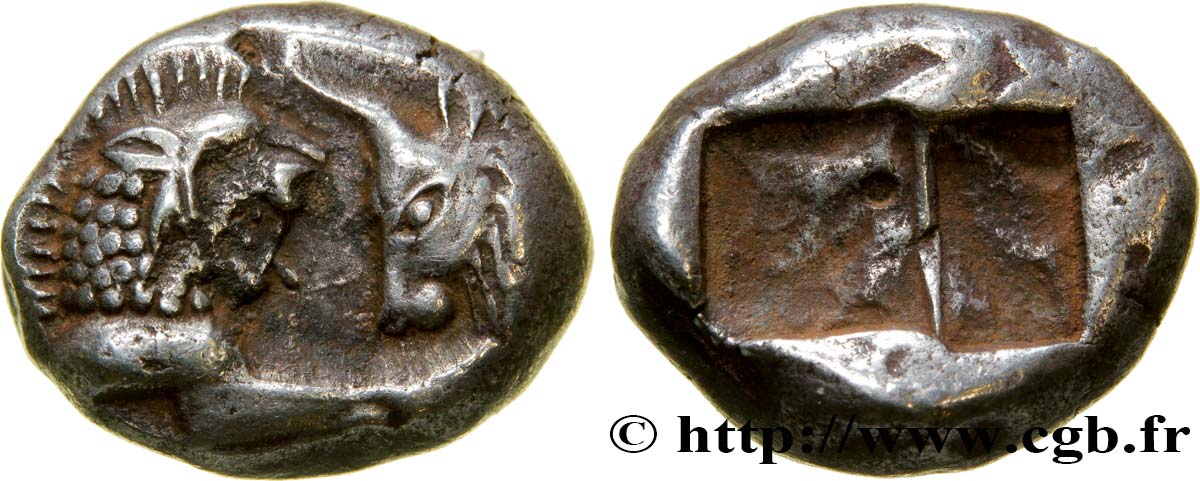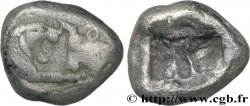bgr_352952 - LYDIA - LYDIAN KINGDOM - CROESUS Hemistatère
Not available.
Item sold on our e-shop (2016)
Price : 2 200.00 €
Item sold on our e-shop (2016)
Price : 2 200.00 €
Type : Hemistatère
Date: c. 550 AC.
Mint name / Town : Sardes Lydie,
Metal : silver
Diameter : 13 mm
Orientation dies : - h.
Weight : 5,28 g.
Rarity : R2
Coments on the condition:
Exemplaire sur un flan ovale, bien centré des deux côtés. Très belle représentation du droit, bien venu à la frappe. Jolie patine de collection ancienne avec des reflets dorés
Catalogue references :
Predigree :
Cet exemplaire provient de la vente iNumis 6, n° 60 et de la collection d’Élisabeth
Obverse
Obverse legend : ANÉPIGRAPHE.
Obverse description : Protomés de taureau et de lion affrontés.
Reverse
Reverse description : Double carré creux informe.
Commentary
Cet hemistatère correspond aussi à un sicle. La datation est parfois remise en question et abaissée. Ce type a pu être frappé par les Perses avant l’adoption du sicle avec l’archer perse comme nouvelle monnaie d’Empire.








 Report a mistake
Report a mistake Print the page
Print the page Share my selection
Share my selection Ask a question
Ask a question Consign / sell
Consign / sell
 Full data
Full data









